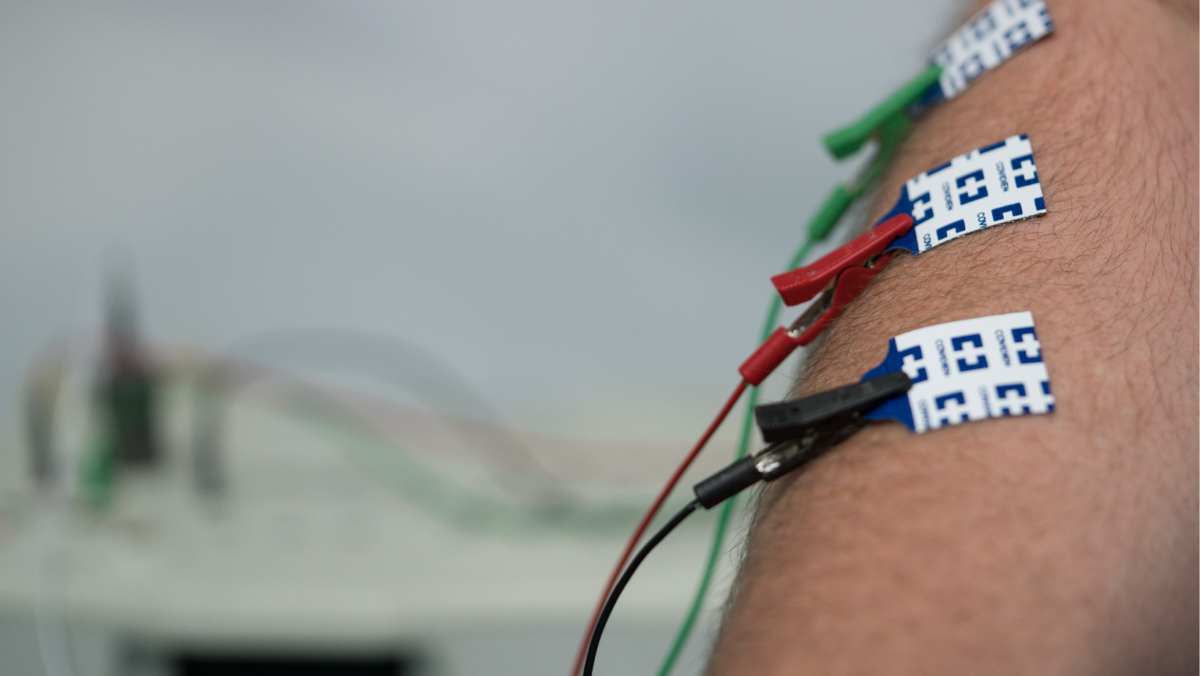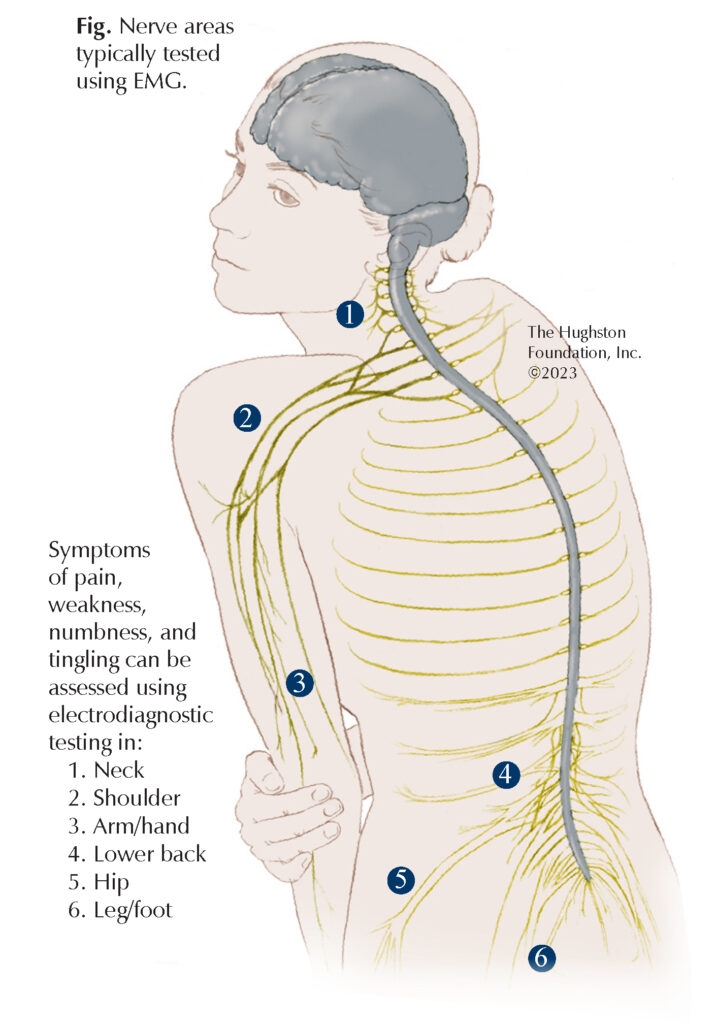
 When you are injured, your nerves tell you where the damage is located in your body. For example, when working properly, the nerves of a stubbed toe send signals to your brain that your toe is hurt and you respond by stepping carefully for a bit. However, when you damage your nerves, disruption of these signals make it harder to pinpoint the problem. A pinched nerve in the neck can cause tingling in the fingertips or inflammation at the wrist can make your whole arm feel like it is burning. Situations like this can be frustrating, but one method to cut through the confusion is for your doctor to order an EMG.
When you are injured, your nerves tell you where the damage is located in your body. For example, when working properly, the nerves of a stubbed toe send signals to your brain that your toe is hurt and you respond by stepping carefully for a bit. However, when you damage your nerves, disruption of these signals make it harder to pinpoint the problem. A pinched nerve in the neck can cause tingling in the fingertips or inflammation at the wrist can make your whole arm feel like it is burning. Situations like this can be frustrating, but one method to cut through the confusion is for your doctor to order an EMG.
“EMG” is short for electromyography and nerve conduction study. This special test assesses the function of each nerve individually to find out which nerves are damaged, what part of the nerve is affected, and the severity of the problem. If your doctor has ordered an EMG test for you, here are some questions you may have before your appointment:
Why does my doctor want me to have an EMG?
There are many reasons why you might experience pain, weakness, numbness, or tingling. An EMG helps your physician determine if there is nerve involvement and what part of the nervous system is affected.
How does my doctor use an EMG to diagnose my condition?
Knowing which nerve(s) are injured and the extent of the damage helps your doctor to determine the best course of treatment, whether it is medication, therapy, injections, or surgery.
Who performs an EMG? Do they have special qualifications and training?
A doctor of physical therapy (DPT) who is board certified in clinical electrophysiology performs the test. These physical therapists have undergone a thorough and rigorous training process, which includes over 2,000 hours of direct EMG testing, more than 500 individual EMG studies, and they must pass a specialty board examination.
Where do I get the test completed?
Often, your therapist will complete the test in a private treatment room in the physical therapy department. Your physician’s office can help you to find a location and time that is convenient for you.
How should I prepare for an EMG?
You should wear loose fitting garments for your test. Wear a short-sleeved shirt or tank top if your neck or arms are to be tested, and a pair of loose shorts if the problem is in your back or legs. Do not apply any lotions, oils, or creams to your skin the day of testing, as it can interfere with the examination process. Most medications will not affect the test, but pyridostigmine products for muscle weakness, such as Mestinon® should be discontinued for 24 hours before testing.
How do you perform the test?
The test is divided into 2 parts. During the first part, your nerves are stimulated electrically, causing you to feel a mild shock sensation. This produces nerve signals which are recorded through small electrodes placed on your skin. During the second part, a small wire in the form of a needle records electrical activity in various muscles.
Does the test hurt?
The physical therapist will position an electrode just under the skin, which can cause a slight prick. Some aspects of the testing may also be uncomfortable, but the physical therapist will work closely with you to make it as pleasant as possible.
Is the test safe?
The testing is safe with minor complications. For example, there may be some bruising or soreness where your physical therapist places the needle electrode, especially if you take prescription blood thinners.
Will an EMG affect my pacemaker or spinal stimulator?
The test does not affect implanted medical devices such as pacemakers or spinal stimulators. However, it is best to turn off the spinal stimulator since it can produce electrical interference, which can make the test more difficult to complete.
How long does it take to complete the test?
It takes approximately 1 hour to complete the full test; with much of this time spent discussing your symptoms and helping you get comfortable before the testing begins.
When will I get the results?
The physical therapist performs the test, interprets or reads the data, and prepares the final report with impressions and conclusions. The physical therapist will send the EMG report directly to your physician within 1 to 2 business days following your test. Your physician may schedule a visit with you to explain the results, or he or she may prefer to call you and discuss the findings over the telephone.
EMG tests offer a unique and informative look at the health of the peripheral nervous system. Don’t worry, an EMG is easy to perform, and most people are surprised that the test isn’t as uncomfortable as they imagined it would be. The information the test provides will help your doctor get you on the road to recovery quickly and more effectively.
Author: Quinn Millington, PT, DPT, ECS, OCS | Montgomery, AL
Last edited on December 5, 2023